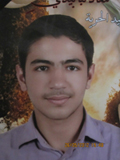
News reports coming out of Aleppo paint a grim picture of the confrontation between opposition fighters and the Syrian armed forces, who are describing this as the “decisive battle”. If the past 16 months are any indication, we have to brace ourselves for a new wave of human rights violations, as well as grave breaches of international humanitarian law. As has been extensively documented by Amnesty International and others, the atrocities committed in Syria have steadily continued to climb.
For example, one of my colleagues who recently returned from Aleppo, documented crimes we believe amount to crimes against humanity. Her reporting from late May describes how government security forces and the notorious government-backed shabiha militias routinely used live fire against peaceful demonstrations in Aleppo, killing and injuring protesters and bystanders, including children, and hunting down the wounded, the medics who treated them, and opposition activists.

Among those killed was Mo’az Lababidi, a 16-year-old schoolboy who was shot dead in front of the police station in the Bustan al-Qasr district of Aleppo. He attended a funeral procession of one of four demonstrators shot dead at a protest in the same area earlier that day. A mourner who was standing next to him when he was shot told Amnesty International that Mo’az was shot in the chest, collapsed and died immediately.
With limited access to Syria (the UN announced a few days ago that it is pulling out remaining staff due to the deteriorating security situation), we are also deploying satellites to closely follow developments on the ground and to document any large scale attacks against civilians. The first images we released earlier this week confirm that the world needs to be alarmed. My colleague Scott Edwards, in a conversation with the BBC, explains the significance of the satellite images.
A forewarning to those involved in the conflict
By using satellite images to monitor and document ground developments, we are sending a clear message to all parties to the conflict: Any large scale attacks against civilians will be clearly documented so that those responsible can be held accountable.
We will continue to monitor the violence in Aleppo, including through the use of satellite images, to document human rights abuses – and to ultimately hold the perpetrators of these grave crimes accountable. Satellite imagery is a tool we have used many times before to document violations during armed conflict, for example in Sri Lanka, Darfur and South Ossetia (and in Syria earlier this year). And while the wheels of international justice are arguably slow to turn, recent milestones have shown that even the most powerful people in the world cannot evade justice. Syria will be no exception.
The body of evidence against the perpetrators of international crimes in Syria is growing. The global inaction in response to these atrocities is reflected in the dire situation of Aleppo today. Our call for justice stands: The UN Security Council must immediately refer the situation in Syria to the International Criminal Court.
